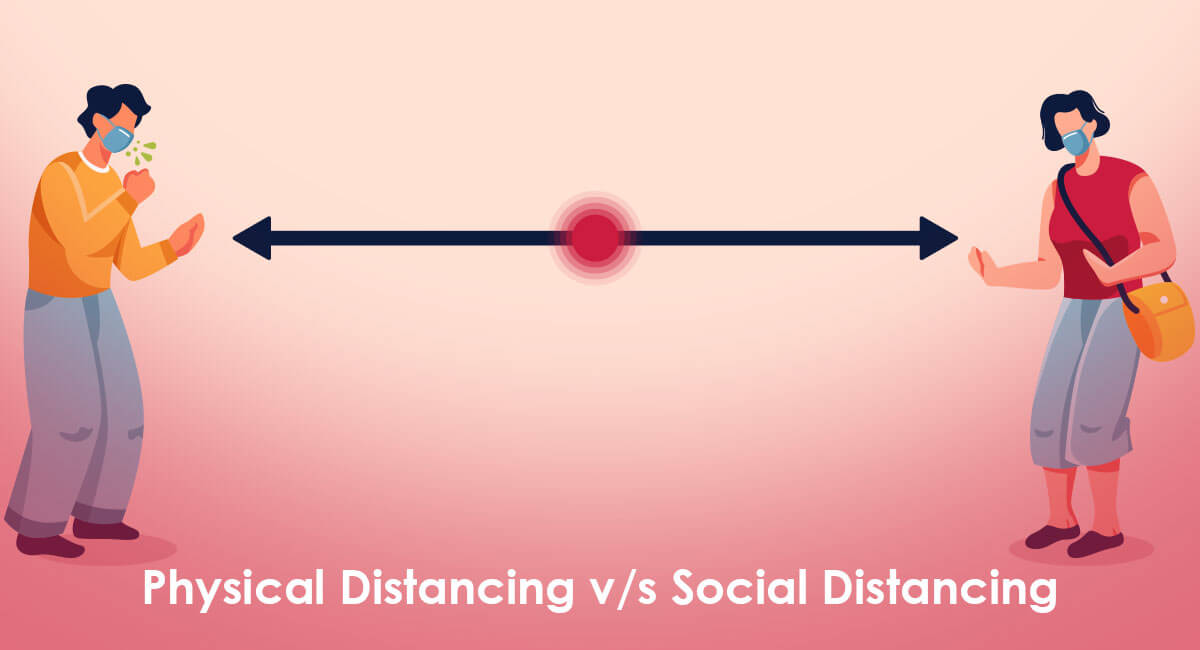

As COVID-19 has plagued our world, the term "social distancing" has been widely used with the aim to encourage the general population to physically distance themselves from others in order to reduce the spread of the virus. However, this term can have unintended but detrimental effects, as it evokes negative feelings of being ignored, unwelcome, left alone with one's own fears, and even excluded from society. These feelings may be stronger in people with mental illnesses and in socio-economically disadvantaged groups, such as stigmatized minorities, migrants, and homeless persons, many of them also having high risk for suicidal behaviour. Mental health disorders are pervasive worldwide; the global burden accounting for approximately 21.2-32.4% of years lived with disability-more than any other group of illnesses. So, the vulnerable group of people with mental health disorders represents a considerable share of the total global population.
In the current context, social distancing means staying at least 6 feet away from one another to decrease the spread of COVID-19. But doesn’t this mean keep 6 feet of physical distance between each other? so why don’t we use this term instead?
As communities reopen and people are more often in public, the term “physical distancing” (instead of social distancing) has been used sometimes to reinforce the need to stay at least 6 feet from others, as well as wearing face masks. Historically, social distancing was also used interchangeably to indicate physical distancing which is defined below. However, social distancing is a strategy distinct from the physical distancing behaviour. Use of “social distance” versus “physical distance” has been addressed and written about, but until the media and our leaders make this transition, it is unlikely to catch on. However, after over a year of distancing, and the effects of quarantine and isolation taking a toll on many, it does seem like it’s time to make this shift in terminology. If it can help mitigate some of the mental health consequences of this pandemic, isn’t it worth it? We at NewAge Preschool North Bangalore understand the gravity of the distinct meanings of the term used and want to inculcate a sense of belonging and togetherness in our students therefore, find that using the term ‘physical’ instead of social not only teaches the students what they mean but also has them feeling connected socially.
According to John M. Grohol, Psy.D., “‘social distancing’ is not only a misnomer, it is exactly the opposite of what we want people to do during any type of natural disaster.” Social interaction is necessary for our mental health and well-being. Social interactions can continue during this pandemic; they will just look and feel different. More than ever before in our history, we have ways to remain social, while maintaining physical distance. We are fortunate to have the means to stay virtually connected through social networks, video and phone calls, and even mailing letters. It is especially important to ensure continued connection with people who are typically marginalized and isolated, including the elderly, undocumented immigrants, homeless persons and those with mental illness.
In many health affairs blogs, their authors stress that, “Messaging matters greatly, especially during a global emergency,” and that “‘Social distancing’ blurs the critical distinction between physical and social proximity. It also does little to shape social psychological dynamics that boost public resilience to sustain required behaviour change.” They go on to recommend a change to “physical distancing, social connection” as a solution to differentiate social activities that maintain physical distance while fostering social connectivity. Here at NewAge PreSchool North Bangalore we regularly reinforce the physical distancing norms while conducting activities for the students to be connected socially.
‘Social distancing’ belongs technically to a set of non-pharmaceutical infection control actions intended to stop or slow down the spread of a contagious disease. However, several weeks into the outbreak, scholars discussed whether the term was, in fact, misleading and could be counterproductive. . It was stressed that it was about ‘distant socialization’ rather than ‘social distancing’ and that the ‘efforts taken to slow the spread of the coronavirus should encourage strengthening social ties while maintaining physical distancing
At a time of crisis and fear, we need the opposite of social distancing. We need a sense that we are in this together, that people are not facing this alone. We need social inclusion, not distance. We want to erode social distance and have closeness. We need that sense of closeness with others, those conversations that make us laugh, and those connections of warmth and compassion. It’s not Social Distancing. It is Physical Distancing we are asked to do and the interchangeability of these terms matter a lot because our mental health is just as important as our physical health.
Maintaining physical distance is an important strategy to slow the spread of COVID-19, but please stay socially connected. It’s how we will get through this – together.
Leave a Reply
Your email address will not be published. Required fields are marked *
Comments
No comments available